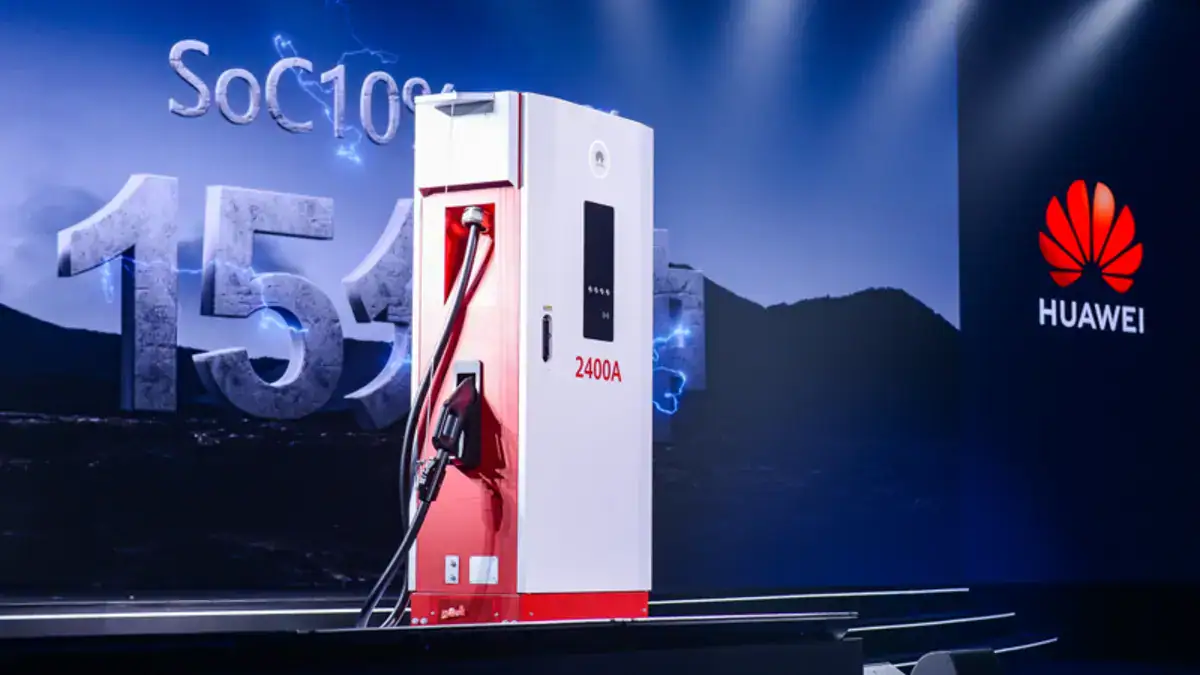
In a historic move for electric mobility, Huawei, in partnership with China Southern Power Grid, has launched the world’s first 100MW EV charging station in Shenzhen, China. This ultra-fast facility is a global milestone, capable of charging over 150 vehicles simultaneously and catering to both passenger EVs and heavy electric trucks.
100 MW Charging at Unprecedented Speeds
The new Sichuan supercharging hub, powered by Huawei’s Megawatt Supercharging technology, is built to support the next wave of ultra-fast-charging heavy-duty trucks. This facility is compatible with “3.5C” supercharging models, enabling drivers to gain around 62 miles of range in just five minutes of charging.
energy savings are projected at $0.21 per mile, which translates into roughly $21,000 in annual savings per vehicle. Over a three-year span, this could offset the cost of an entire truck. Station operators also stand to gain, with charging efficiency improvements expected to boost operational performance by more than 15 percent.
The scale of this hub is unmatched. Each charging gun delivers up to 600 kW, making it the fastest commercial EV charging infrastructure worldwide. To put this in perspective:
- Tesla Superchargers: 250 kW
- IONITY Europe: 350 kW
- Huawei: 600 kW per vehicle
This means an average EV can be fully charged in under 10 minutes, a game-changing step in overcoming one of the biggest barriers to EV adoption: charging time.
100MW: A Smart Energy Ecosystem
Huawei’s system integrates:
- AI-driven load balancing
- Cloud-based real-time analytics
- Renewable energy sources, including solar
- Vehicle-to-Grid (V2G) technology, allowing EVs to feed power back into the grid
This makes the hubs a smart energy ecosystem that aligns with China’s carbon neutrality goals by 2060.
China’s EV Infrastructure Race
China already dominates global EV sales, accounting for over 60% in 2024. With plans to deploy 25 million public charging points by 2030, this mega station reflects the country’s ambition to lead the EV infrastructure revolution, not just EV production.
Where Does Pakistan Stand?
In contrast, Pakistan’s EV progress is sluggish. Despite the Electric Vehicles Policy 2020–2025, most public chargers in major cities like Islamabad, Lahore, and Karachi are just 22–50 kW slow chargers, a far cry from China’s ultra-fast 600 kW systems.
Pakistan’s adoption hurdles include:
- High EV prices
- Weak grid infrastructure and load-shedding
- Lack of government-backed charging incentives
Combined with the shift to electrified heavy-duty trucks, the facility is expected to cut carbon emissions by about 45,000 tons annually, showcasing the Chinese giant’s ambitions for large-scale charging projects that can accelerate both energy efficiency and decarbonization in logistics.
